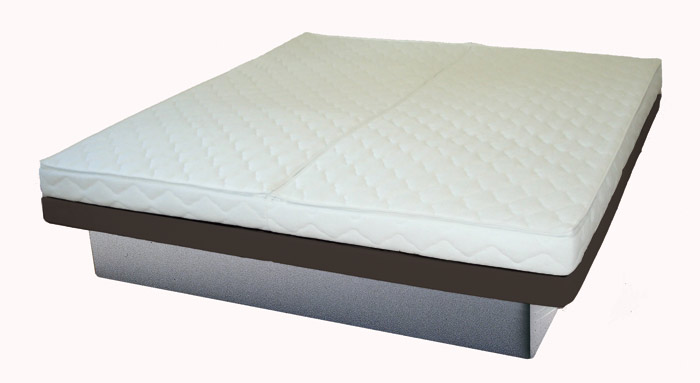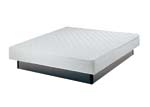Joining of Plastics and Composites for manufacturing a waterbed or Watermattress
The
use of plastics and composites is very important for manufacturing
a waterbed or watermattress. Plastics and composites offer many advantages
that no other material has:
• High specific strength (strength/density)
• High specific modulus (modulus/density)
• Design flexibility
• Corrosion resistance
• Excellent life expectancy
The wide variety of polymers and polymenc composites makes it possible to select and at times even customize the material and waterbed to the wished quality and price of the customer. Therefore, the same foils the we use for producing a watermattress are often being used in more and more applications under more stringent requirements. Continuing efforts in discovering new polymers while modifying and reinforcing existing polymers to create new material combinations further increases the potential uses for these materials. Some of our customers buy waterbeds made with Mesamoll 2 Softener and special other adhessives. Some wish other kinds of foils. Quiaomenglai has at the moment the first experiences with water-resistent PU-foils. It will be a long way untill they are really perfect, but we start early with this special foil quality to be one of the first companies that can offer a new waterbed-foil generation.
Joining
is a critical step in the manufacture of components from plastics and
polymenc composites.
As the requirements for the component
increase,
so do the requirements for Joining, especially in structural
applications. Joints are needed when:
• Part Integration is impossible due to complexity and/or cost,
• Using different materials in one structure,
• Disassembly is required, and
• Repair of damage is needed.
Careful consideration must be given to the joint or the benefits gained
from using specific materials may be eroded at the joint. For
example, if lower weight or corrosion resistance were an important consideration
in
material selection, it would be a determent to the final assembly
to use metallic fasteners for joining. There are many important
considerations for joint design in waterbed made of plastics
and composites including:
• Region and magnitude of load transfer across the joint,
• Type of loading applied to the joint,
• Geometry of the parts,
• Operating environment,
• Reliability and repeatability,
• Anticipated life.
The methods for joining waterbed foils made of PVC and other plastics and
composites can be divided into three major categories. We
as a waterbed manufacturer use only one of it:
- mechanical joining, adhesive bonding, and welding. Mechanical joining involves the use of separate fasteners such äs metallic or polymenc screws or it relies on integrated design elements that are molded into the parts such äs snap-fit or press-fit joints.
- In adhesive bonding, an adhesive is placed between the parts (adherents) where it serves äs the material that joins the parts and transmits the load through the joint.
- In welding or fusion bonding, heat is used to melt or soften the polymer at the mterface to enable polymer intermolecular diffusion across the mterface and chain entanglements to give the joint strength.
Each
of these categories is comprised of a variety of joining
methods that
can be used in a wide
ränge of
applications. This handbook is devoted
to welding processes only, as
there are similar handbooks devoted to
adhesive bonding and mechanical joining. For
manufacturing our waterbeds we normally only use welding categories
like HF welding. Only for very special things
it may be usefull to use another kind
of joining the plastics.
Welding a special Waterbed-PVC-Foil to manufacture the watermattress.
Process Description of welding a waterbed or watermattress with Radio Frequency
Waterbed-Foils: Plastics and Composites for manufacturing waterbed foilsWaterbed Manufacturer ChinaBecause we manufacture the Waterbeds in China, we can offer you cheap prices for every article made of vinyl or foam. We are cheaper than some other waterbed factories in China or whole Asia, but we surely are not the cheapest waterbed manufacturer worldwide. Even if you buy our cheapest Waterbeds we try to do works like welding and cutting of the vinyl the best as we can and we have a long time knowledge in manufacturing waterbeds. We can manufacture waterbeds with the most durable foils produced by BAYER AG from Germany. ----------------------------------------------------------------------------------------------------------------------- |
|
| ------------------------------------------------------------------------------------------------------ |
|
| ------------------------------------------------------------------------------------------------------ |
Here you
will see the detailed description of the Waterbed / Watermattress articles
like Foam Rails, Mattress Covers, Waterbags and Liners, Waterbed Heaters. |
waterbed producer and manufacturer watermattress or waterbed mattress




